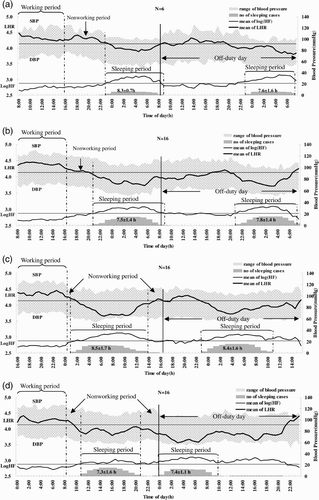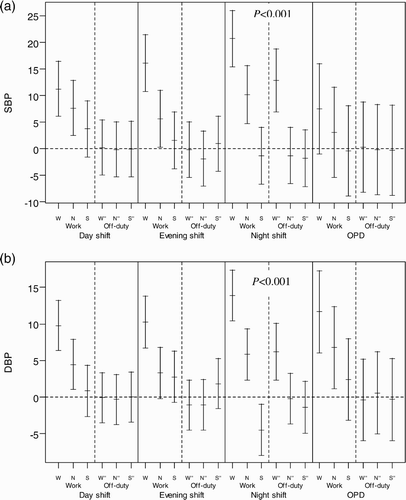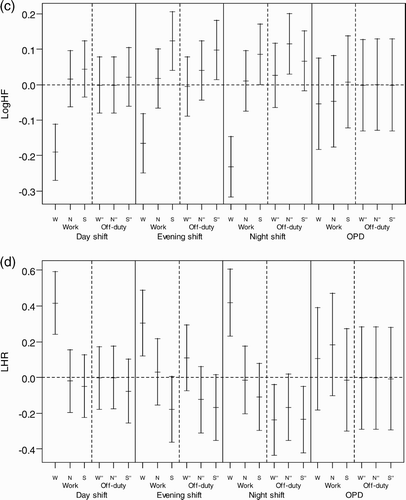Figures & data
FIGURE 1 Dynamic changes of simultaneous HRV and BP recordings obtained during a work day and consecutive off-duty day under different shifts. (a) OPC without shift; (b) day shift; (c) evening shift; and (d) night shift. Duration (in hours) of sleeping periods is shown at the bottom of each panel as mean ± SD. The height of the shadow represents the number of subjects who were asleep corresponding to each time period. Two parallel lines indicate mean LHR and Log HF of outpatient clinic nurses (OPC).

TABLE 1 Regression coefficients and standard errors (SE) resulting from construction of the linear mixed-effect model for circadian rhythm–adjusted parameters of HRV and BP changes across each period of the work and consecutive off-duty day of each shift (day shift as a baseline)
FIGURE 2 Recovery of HRV and BP across each period of work day and consecutive off-duty day in each shift. The recovery of HRV and BP from different shifts was defined as the BP return to the baseline, which is the hourly mean of the off-duty day after a day shift for each subject. Each HRV and BP measurement was subtracted from the corresponding hourly time-of-day mean to obtain the differences or deviations from baseline. The distributions of all such differences were collected for each period under the three shifts and plotted as the mean and 95% confidence interval. (a) Mean difference of SBP; (b) mean difference of DBP; (c) mean difference of Log HF; (d) mean difference of LHR. W = working period; N = nonworking period; S = sleeping period; W" = time corresponds to working period; N" = time corresponds to nonworking period; S" = sleeping period on the off-duty day.


